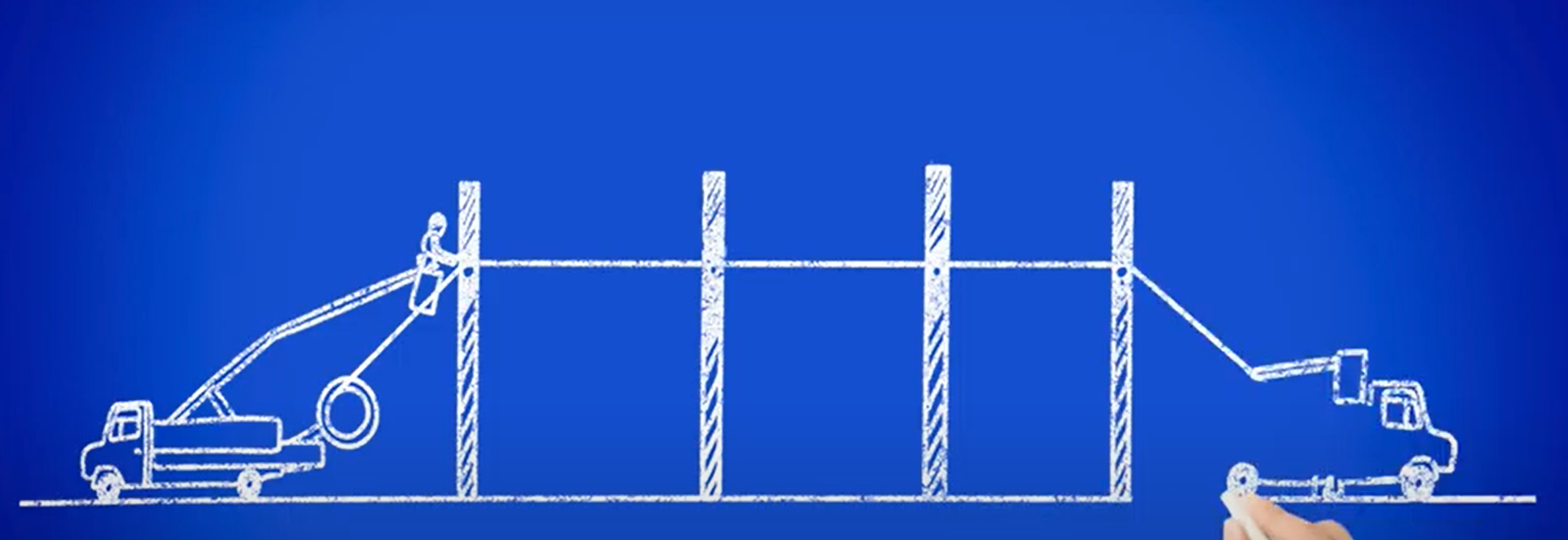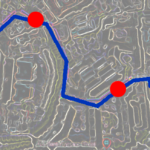We discuss the following topics in this blog:
- Aerial FIbres to connect remote rural areas
- Installation of Aerial Optical Fibre
- Advantages of ADSS Fibre Optic Cable
- Major Challenges in Installation of Aerial Fibre Optic Cable
In addition to these topics, we shall also be answering the following FAQs:
- What is an Optical Fibre Cable?
- What is WiFi?

Contents
Can Aerial Cables Overcome the Digital Divide?
To eliminate the digital divide aerial cables will be deployed massively in the software bank or rural areas to provide affordable broadband to all. Remember type of cable deployment is dependent on terrain, climate, access to right-of-way like distribution or transmission lights grounding and banding, power utility communications and signaling networks age and type of existing cable infrastructure serving the intended area.
Installation of Aerial Optical Fibre
Let’s look at the installation methods now the most common method is where the cable is supported between poles by being latched to a wire rope messenger strand with a small gauge wire with latched cable the messenger strand component must be properly tensioned to resist the expected loading conditions this is to keep the cable in minimal stress while maintaining sag in the messenger and cable and keeping them with the safe specification limits to simplify the placement of fibre optic cables on aerial plants self supporting cables were designed.

This cable gets its name from its shape it incorporates both a steel messenger and the core of a standard or unit tube optical fiber cable into a single jacket. As shown in fig cross-section of cable this allows speedy one-step installation and results in a more durable aerial plan but this results in increased cable diameter and weight requires special tools and skilled manpower for installation and most importantly owing to metallic material presence is highly susceptible to electricity and can be used near transmission lines
What are the Advantages of ADSS Fibre Optic Cable?
ADSS all electric self-supporting cables overcome these limitations they are our second type of self-supporting cable. These cables don’t suffer power coupling effects and bending and grounding issues since they are fully dielectric they are designed with their non-metallic strength member and support member.
ADSS cables are developed using aramid yarn that has high strength strong fabric integrity they can be placed on either existing aerial support structure or a new structure for unsupported spans of up to 1000 meters in length for short and medium span lengths glass roving yarn or fiber reinforced plastic can be used instead of arabic yarn for cable strength. Since these cables use non-metallic materials they can be mounted on its supporting structure at a level below any power utility plan.
Hence making this installation simpler faster and cost effective with different hardware options ADSS cables can efficiently transfer the load to its supporting structure then end supports provide a transfer of tensile load from the end of the cable to the ADSS and support structure support and suspension provides vertical support to the cable vibration dampers used at the end of the ADSS cable to reduce the dynamic effect of wind and vibrations on the cable.
ADSS Installation Method
Now there are two main methods for placing aerial plants; Stationary reel method and moving rail method.
The stationary reel method, this method the cable reel is positioned at the starting end of the cable placement and position at least 50 to 60 feet from the first support ac with position on each support structure the cable end is attached to a winch line of similar unit weight to the cable with a double rotating swivel threaded through the support shift on each support structure once pulled into position the cable is transferred from the shifts to the permanent cable support as it is tensioned to the specified levels it can be used anywhere since it does not need an unobstructed right-of-way or vehicular access to the pole line.
The moving reel method, in this method the cable is paid off the top of the cable wheel carried by a moving vehicle as it drives along the pole line as the vehicle passes each pole line the cable is placed into place by a technician in a lift bucket place into a j hook or black fitting button to support structure for temporary support this procedure continues up to the dead end pole here the cable is tensioned and terminated into dead end fittings for ADSS cables. The moving reel method is more productive and less labor intensive.
What are the Major Challenges in Installation of Aerial Fibre Optic Cable?
However the biggest challenge for any aerial cable plant is cable breakage all infrastructure is susceptible to collapse due to high winds extreme temperatures falling tree branches and vehicle accidents this can cause large scale damage and can be fatal too to address.
For this STL has designed an innovative breaking load optimized worksafe aerial cable with the required tensile strength and an optimum predictable point of breakage in the event of a hazard the cable will break first without damaging the supporting bolt structure surrounding property and working personality.
FAQs
What is Optical Fibre Cable?
An optical fibre cable is a cable type that has a few to hundreds of optical fibres bundled together within a protective plastic coating. They help carry digital data in the form of light pulses across large distances at faster speeds. For this, they need to be installed or deployed either underground or aerially. Standalone fibres cannot be buried or hanged so fibres are bunched together as cables for the transmission of data.
This is done to protect the fibre from stress, moisture, temperature changes and other externalities. There are three main components of a optical fibre cable, core (It carries the light and is made of pure silicon dioxide (SiO2) with dopants such as germania, phosphorous pentoxide, or alumina to raise the refractive index; Typical glass cores range from as small as 3.7um up to 200um), Cladding (Cladding surrounds the core and has a lower refractive index than the core, it is also made from the same material as the core; 1% refractive index difference is maintained between the core and cladding; Two commonly used diameters are 125µm and 140µm) and Coating (Protective layer that absorbs shocks, physical damage and moisture; The outside diameter of the coating is typically either 250µm or 500µm; Commonly used material for coatings are acrylate,Silicone, carbon, and polyimide).
An optical fibre cable is made up of the following components: Optical fibres – ranging from one to many. Buffer tubes (with different settings), for protection and cushioning of the fibre. Water protection in the tubes – wet or dry. A central strength member (CSM) is the backbone of all cables. Armoured tapes for stranding to bunch the buffer tubes and strength members together. Sheathing or final covering to provide further protection.
The five main reasons that make this technology innovation disruptive are fast communication speed, infinite bandwidth & capacity, low interference, high tensile strength and secure communication. The major use cases of optical fibre cables include intenet connectivity, computer networking, surgery & dentistry, automotive industry, telephony, lighting & decorations, mechanical inspections, cable television, military applications and space.
What is WiFi?
Put simply, WiFi is a technology that uses radio waves to create a wireless network through which devices like mobile phones, computers, printers, etc., connect to the internet. A wireless router is needed to establish a WiFi hotspot that people in its vicinity may use to access internet services. You’re sure to have encountered such a WiFi hotspot in houses, offices, restaurants, etc.
To get a little more technical, WiFi works by enabling a Wireless Local Area Network or WLAN that allows devices connected to it to exchange signals with the internet via a router. The frequencies of these signals are either 2.4 GHz or 5 GHz bandwidths. These frequencies are much higher than those transmitted to or by radios, mobile phones, and televisions since WiFi signals need to carry significantly higher amounts of data. The networking standards are variants of 802.11, of which there are several (802.11a, 802.11b, 801.11g, etc.).













